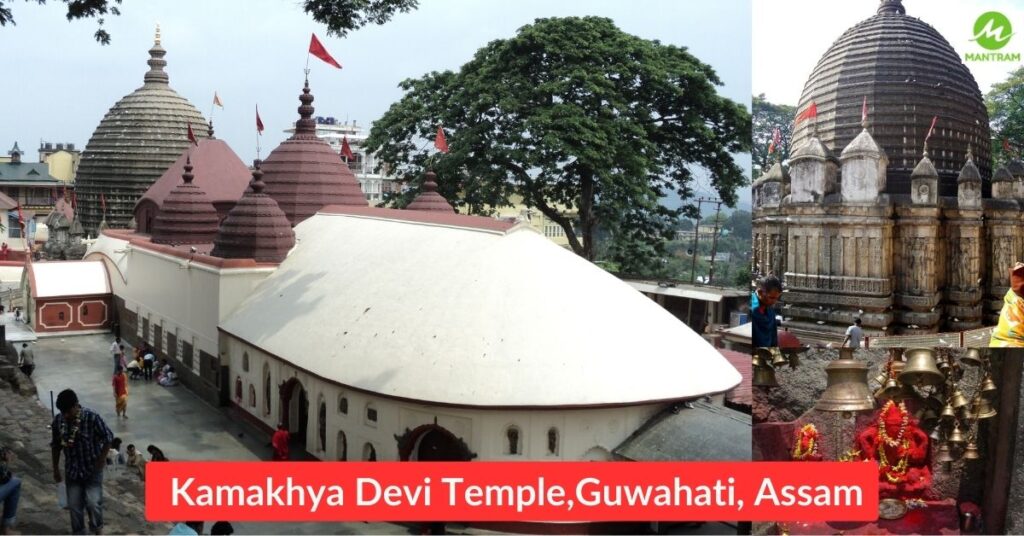The Kamakhya Devi Temple, located on the picturesque Nilachal Hill in Guwahati, Assam, is an ancient and revered pilgrimage site of immense importance to Hindu Dharma. It ia one of the “Shaktipeeth” among 51. This temple is associated with the reproductive organs or the yoni of the Goddess Sati (an incarnation of Goddess Parvati). This magnificent temple holds a special place in the hearts of millions of devotees and is dedicated to Goddess Kamakhya, the powerful and divine representation of femininity. The tranquil surroundings of Nilachal Hill enhance pilgrims’ meditative and reflective experience, fostering a deeper connection with the divine.
1.What is the Kamakhya Temple famous for?
Cultural Heritage “Kamakhya Temple”:
Beyond its spiritual significance, the Kamakhya Devi Temple also stands as a living testament to Assam’s rich cultural heritage. The temple’s festivals, rituals, music, dance, and traditional art forms are a reflection of the state’s vibrant cultural identity, attracting tourists and enthusiasts from diverse backgrounds.
The Kamakhya Devi Temple holds immense significance in Hindu Dharma and is revered as one of the 51 Shakti Peethas, which are sacred places associated with the worship of the divine feminine energy, Shakti. Also one of four crucial Shaktipeeth.
Goddess Kamakhya:
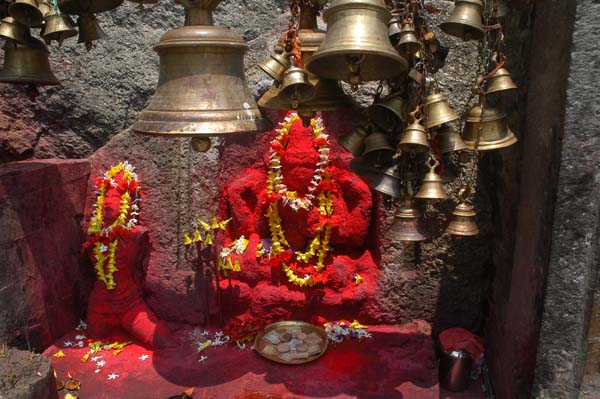

Goddess Kamakhya, the presiding deity of the temple, holds a unique position in Hindu mythology. Revered as the Mother Goddess, she embodies the essence of Shakti, the cosmic feminine energy that empowers and sustains creation. Devotees seek her blessings for fertility, protection, and fulfillment of desires.
The Kamakhya Devi Temple celebrates the essence of womanhood and feminine energy. It recognizes the power and strength of women, not just in the physical realm but also in the spiritual and cosmic dimensions. Devotees offer prayers and seek blessings from Goddess Kamakhya to give them courage, prosperity, and wisdom.
Story of Kamakhya Devi Shakti Peetha:
In Hindu mythology, it is believed that after Lord Shiva’s tandava dance of destruction carrying the body of his wife Sati, her body parts fell at various locations across the Indian subcontinent. These locations became known as Shakti Peethas, and Kamakhya Devi Temple is said to be the place where Sati’s womb and vagina fell. Hence, the temple is considered one of the most revered Shakti Peethas, signifying the divine feminine power.
2.Mystery of Mensurating Goddess Kamakhya Devi Temple:-
The Brahmaputra River, is an integral part of the mystique surrounding the Kamakhya Devi Temple in Assam, particularly during the month of June. Both scientific and religious myths contribute to the enigma associated with the river during this time.
Religious Myth – Menstruation of Goddess Kamakhya:
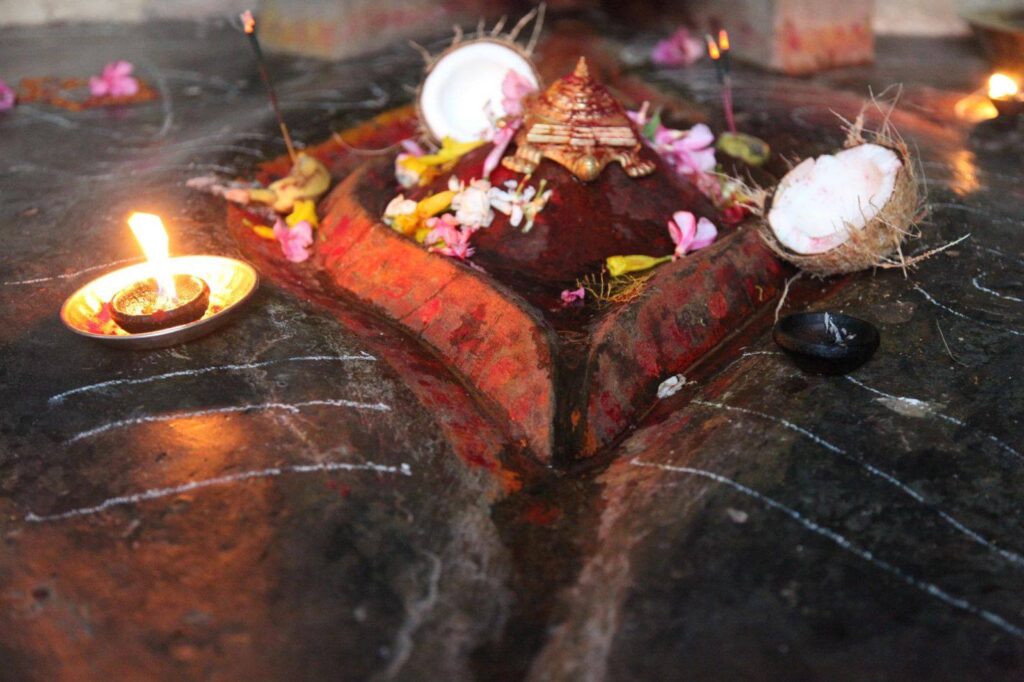

Religious myth adds a profound layer of mystery to the Bramhaputra River’s significance in June. According to ancient beliefs, Goddess Kamakhya, the presiding deity of the temple, undergoes her annual menstrual cycle during this period. It is believed that the river turns red during this time, symbolizing the Goddess’s menstruation. This event is considered highly auspicious and is celebrated as the Ambubachi Mela.
The red-colored water of the Brahmaputra River, coupled with the temple’s rituals and festivities, creates an atmosphere of mysticism and reverence. While the scientific reason, some people claim that it is because of high iron and cinnabar deposit in water. Others continue to believe that it’s Divine Miracle!
Absence of an Idol:-Unlike most Hindu temples that house idols of deities, the Kamakhya Temple’s main sanctum houses a yoni-shaped stone symbolizing the divine feminine energy. The absence of a traditional idol adds to the temple’s uniqueness and enigmatic nature.
3.What is the History of Kamakhy Devi Temple:-
The Kamakhya Devi Temple boasts a rich and storied history dating back centuries. It is believed that the temple’s origins can be traced to ancient Vedic times, with references to its existence found in various sacred Hindu scriptures and texts.
The history of Kamakhya Devi Temple in Assam dates back several centuries and is shrouded in ancient mythology and historical accounts. While the exact date of its construction remains uncertain, the temple’s origins can be traced to ancient times, possibly as early as the 8th century CE. The construction and patronage of the temple are associated with various rulers and dynasties that have held sway over the region.
One of the earliest mentions of the Kamakhya Temple can be found in the Kalika Purana, in the 10th century, an ancient Hindu scripture, which provides insights into the temple’s origin and significance.
One of the prominent dynasties associated with the temple’s history is the Pala dynasty, which ruled over the region in the early medieval period. The Palas were known for their patronage of art, culture, and religious institutions, and it is believed that they contributed to the temple’s development during their reign.
Over time, various other rulers and regional leaders, including the Ahoms and Kochs, contributed to the temple’s growth and prosperity. The Kamakhya Devi Temple remained a significant spiritual and cultural center in Assam, attracting pilgrims and devotees from different parts of the Indian subcontinent.
4.Structure of the Kamakhya Temple –
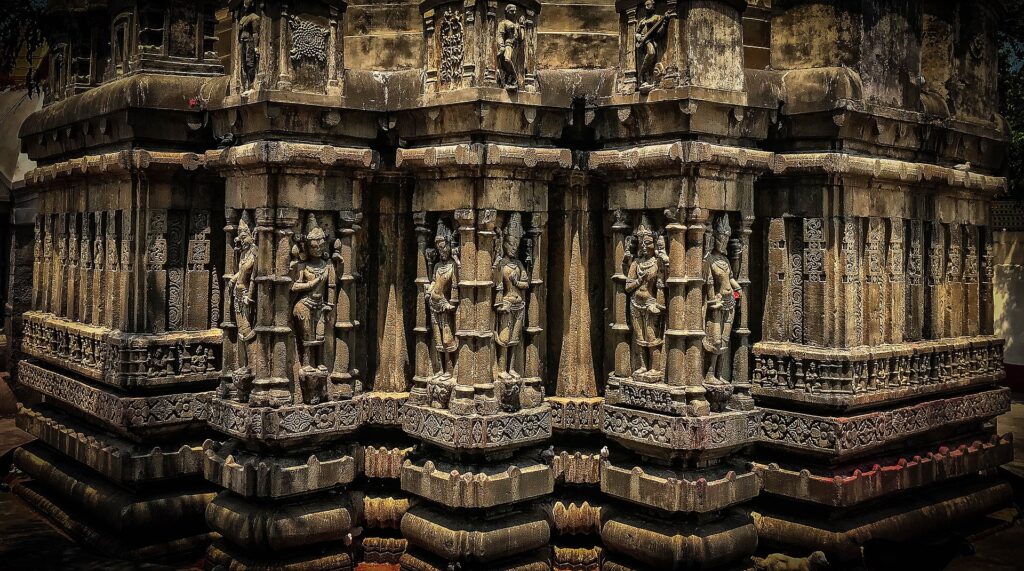

The temple’s architecture is an exquisite blend of Hindu and indigenous styles, showcasing the artistic brilliance of the region. Intricate carvings, beautiful sculptures, and vibrant colors adorn the temple’s structure, making it an awe-inspiring sight for visitors.
The Kamakhya Temple is an architectural marvel located atop Nilachal Hill in Guwahati, Assam. It is a significant pilgrimage site dedicated to Goddess Kamakhya and reflects a blend of Hindu and indigenous architectural styles. The temple complex consists of several distinct parts, each serving a specific purpose in Hindu religious practices. Let’s explore the structure of the Kamakhya Temple:
Garbhagriha (Sanctum Sanctorum):
The Garbhagriha is the innermost and holiest part of the Kamakhya Temple. It is the primary shrine where the presiding deity, Goddess Kamakhya, is enshrined. The sanctum houses a yoni-shaped stone, symbolizing the divine feminine energy of the Goddess. Devotees offer their prayers and seek blessings from the sacred presence of Kamakhya here. The atmosphere inside the Garbhagriha is filled with spirituality and devotion.
Calanta (Inner Chamber):
The Calanta is an important part of the temple structure located just behind the Garbhagriha. It serves as the inner chamber or antechamber where only the priests and designated temple personnel are allowed. Rituals and offerings are prepared here before being presented to the main deity in the Garbhagriha. The Calanta is a place of spiritual significance where intricate ceremonies take place to honor Goddess Kamakhya.
Panchratna (Five-Towered Shikhara):
The Panchratna refers to the five-towered Shikhara or spire that adorns the top of the Kamakhya Temple. Each tower is adorned with intricate carvings and sculptures, showcasing the exquisite craftsmanship of the artisans. The Panchratna is a distinctive feature of the temple’s architecture and adds to its visual grandeur.
Natamandir (Dancing Hall):
The Natamandir, also known as the Dancing Hall, is an open hall situated in front of the Garbhagriha. It serves as a space for various cultural and religious performances, including music, dance, and recitals, during special festivals and occasions. The Natamandir is adorned with beautiful carvings and provides a platform for showcasing Assam’s vibrant artistic and cultural heritage.
5. What is the power of Kamakhya Temple? (Tantric Traditions)
The Kamakhya Devi Temple is deeply associated with Tantric practices, adding to its spiritual allure. Tantricism, a path of spiritual enlightenment, considers the divine union of Shiva and Shakti as the ultimate realization of cosmic harmony. The temple’s sanctity attracts seekers of spiritual knowledge and wisdom from far and wide.
Tantricism recognizes the divine union of masculine and feminine energies, and women are considered embodiments of divine power. This aspect enhances the role of women in spiritual pursuits and rituals.
6. Which festival is famous in Kamakhya Temple?
The Ambubachi festival at Kamakhya temple
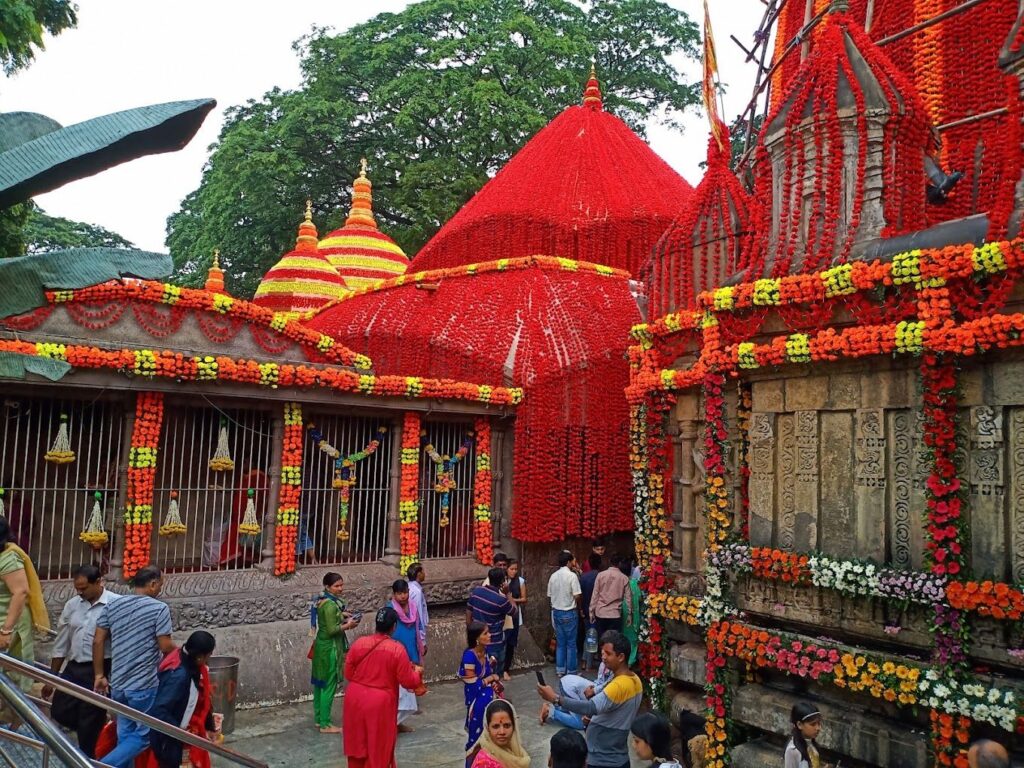

One of the most significant festivals celebrated at the Kamakhya Devi Temple is the Ambubachi Mela. This annual event marks the Goddess’s menstruation, symbolizing nature’s creative force. The temple remains closed for three days during the festival, and on the fourth day, the Goddess is worshipped with utmost devotion and reverence. (Men are not Allowed to Enter this Temple, During this time period). Mother Earth is at her fertile best, Nurturing her womb with the help of rain. Menstruation is seen as a symbol of fertility and the regenerative power of nature. It challenges the taboo surrounding menstruation and emphasizes its natural and sacred aspects.
Redefining the Notion of Impurity:
The menstruation ritual at the temple challenges the age-old notions of impurity associated with women’s periods. Instead, it embraces the cyclic nature of life and the power of creation. The temple’s acknowledgment of menstruation as a divine phenomenon helps break the stigma and empowers women to embrace their bodily functions without shame or embarrassment.
7. Kamakhya Temple Timings
As of my last update in September 2021, the general timings of Kamakhya Devi Temple in Assam, India, were as follows:
Temple Opening Time: The temple opens its doors to devotees and visitors in the early morning.
From around 8:00 AM to 1:00 PM, the temple remains accessible for worship and darshan.
Afternoon Break:
There is a midday break or closure for a few hours, usually from 1:00 PM to 2:30 PM or 3:00 PM. During this time, the temple premises are closed to the public.
Evening Timings:
The temple reopens in the late afternoon, around 2:30 PM or 3:00 PM, and remains open until 5:30 PM or 6:00 PM.
Please note that these timings are subject to change, and it’s always advisable to check with local authorities, the temple management, or official sources for the most up-to-date information on Kamakhya Devi Temple’s timings before planning your visit. Additionally, specific festivals or special occasions may lead to variations in the regular timings.
Such as Durga Pooja, etc, Timing changes such as,
5:30 AM – Pithasthana Snana
6:00 AM – Nitya puja
8:00 AM – Temple door open for devotees
1:00 PM – Temple door closed for food offerings to the goddess.
How much time is required for Kamakhya Darshan?
It Takes normally 2-3 hours in the normal line. Less than 1 hr on VIP pass of 100 rupees per person. Pass is available for a limited time. You can book online too.
8.How to reach Kamakhya Temple:-
By Bus:
Guwahati is well-connected by road, and there are regular bus services from nearby cities and states. ASTC also runs Buses that help to reach Kamakhya Devi Temple, it Operates from 8:00 am to 6:00 pm at a gap of Every 1 Hour.
Local Transportation:
After reaching Guwahati, you can use various modes of local transportation, such as taxis, auto-rickshaws, or local buses, to get to the Kamakhya Temple. The temple is situated on Nilachal Hill, and you may need to climb a flight of stairs to reach the main temple complex.
By Air:
Guwahati has an international airport known as Lokpriya Gopinath Bordoloi International Airport (GAU). It is well connected to major cities in India and also has some international flights. Once you land at the airport, you can easily find taxis or cabs to reach the Kamakhya Temple.
9.Conservation Efforts of Kamakhya Devi Temple:
As a site of historical and cultural importance, the Kamakhya Devi Temple is under the careful preservation of the Archaeological Survey of India (ASI). These conservation efforts aim to protect the temple’s architectural splendor and sacred artifacts for generations to come.
Other Structures and Surroundings:
Apart from the main temple complex, the Kamakhya Temple premises also include various other smaller shrines and temples dedicated to different deities and cosmic forces. The surroundings of the temple offer stunning panoramic views of the Brahmaputra River and the lush green landscape of Assam.
In conclusion, The Kamakhya Devi Temple is a place of great reverence in Hindu Dharma, celebrating the divine feminine energy and promoting women’s empowerment. Its connection to Shakti Peethas, the celebration of menstruation through the Ambubachi Mela, and its role in Tantric traditions underscore the temple’s deep-rooted significance in uplifting and empowering women, redefining societal norms, and embracing the sacredness of the female body and its natural processes.
Also, the Kamakhya Devi Temple in Assam remains an embodiment of Hindu devotion and cultural heritage. Its ancient history, architectural beauty, and deep-rooted association with Goddess Kamakhya and Tantric traditions make it a revered destination for spiritual seekers and a source of pride for the people of Assam.

